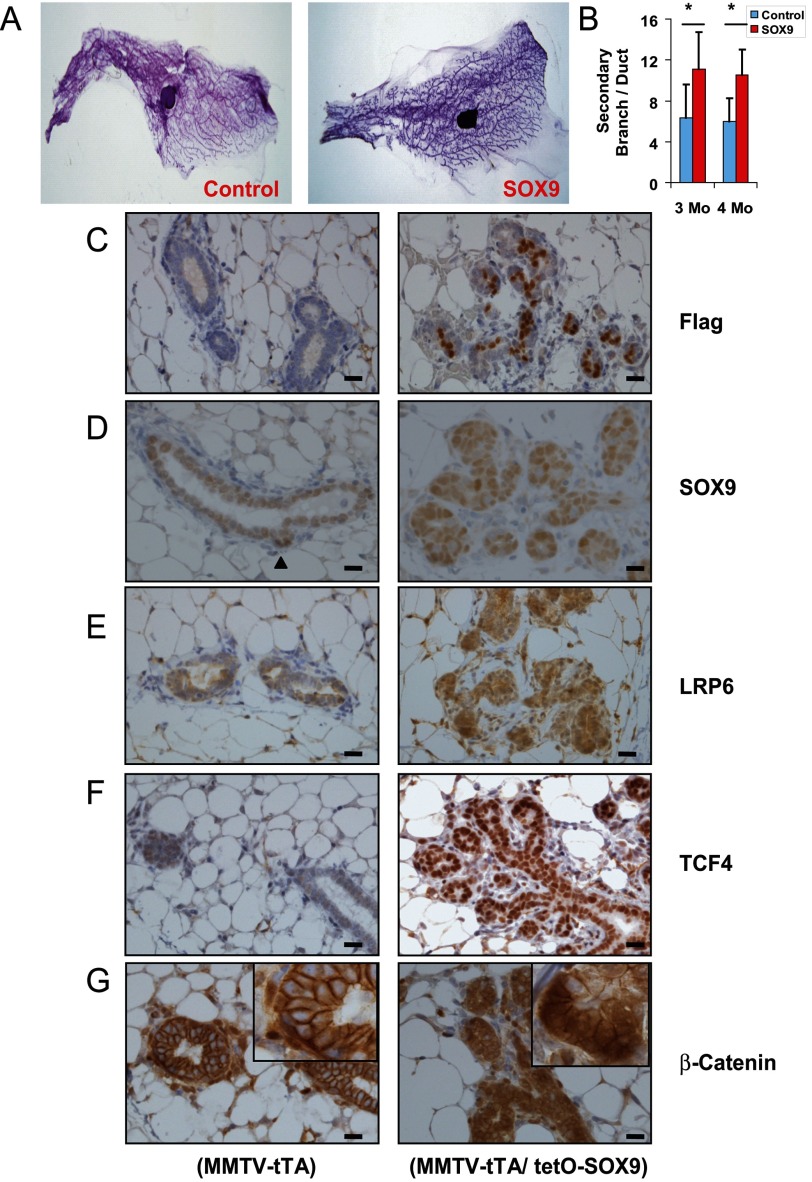FIGURE 6.
SOX9 in vivo overexpression leads to increased mammary dutal branching, increased LRP6 and TCF4 expression, and enhanced Wnt/β-catenin signaling. A, whole mount staining of 4th pair mammary tissues of 4-month-old wild type FVB (control) or MMTV-rTA/TetO-SOX9 (SOX9) mice. B, the secondary branching was counted under low power view (40×). Two mice from control or SOX9 groups were examined in either age group. In the 3-month-old groups (3 Mo), a total 39 and 37 ducts were examined in the control and SOX9 group, respectively. Similarly, 39 and 35 ducts were examined in the 4-month-old group (4 Mo). Student's t test (two-sided) was performed to determine statistical significance (*, p < 0.01). C–G, mammary tissues from 4-month-old single (MMTV-tTA) or double (MMTV-tTA/TetO-SOX9) transgenic virgin mice were examined by immunohistochemistry for FLAG-tagged SOX9 transgene (C), SOX9 (D), LRP6 (E), TCF4 (F) and β-catenin (G). Arrowhead in D indicates increased endogenous SOX9 expression at a site that appears to be branching. Insets, higher power views. Error bars, 20 μm.

